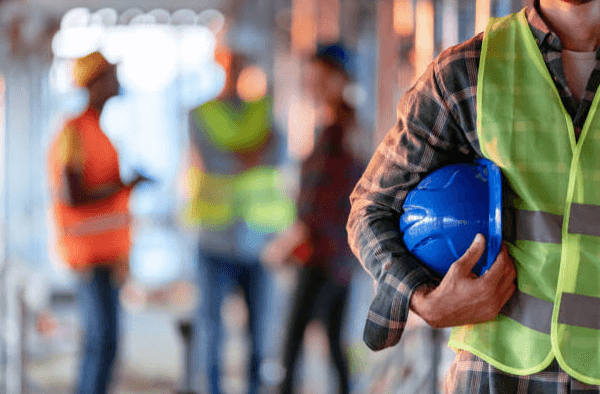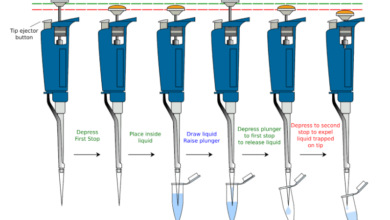How to Write a Safe Work Method Statement

Introduction
A safe work method statement is a tool that sets out the steps to be taken to complete a task safely. It should be used for hazardous tasks where there is a risk of injury or harm. The statement should outline the hazards, risks, and control measures for the task. It should be developed by the person carrying out the work, in consultation with their supervisor.
What is a Safe Work Method Statement?
A Safe Work Method Statement (SWMS) is a document that sets out the high-risk construction work activities to be carried out at a workplace, the hazards and risks arising from these activities, and the measures to be put in place to control the risks.
The SWMS must be prepared before any high-risk construction work commences. It must be brought to the attention of all workers who carry out or are likely to be exposed to the hazards and risks identified in the statement. The SWMS must also be made available to any other person who may be affected by the work.
The content of an SWMS will vary depending on the type and complexity of the work, but must at a minimum identify:
• the activity/ies to be carried out;
• the location where it will take place;
• who will carry it out;
• the plant, equipment, and materials used;
• the potential hazards and risks associated with carrying out the activity/ies;
• the measures that will be put in place to control those risks; and
• a list of instructions, tasks or steps that detail how the activity/ies is/are to be safely carried out.
Why do you need a Safe Work Method Statement?
A Safe Work Method Statement (SWMS) documents a process for identifying and controlling health and safety risks and hazards.
A document is a tool that can be used to communicate health and safety information to employees and contractors. It can also be used as part of an organization’s tendering process.
An SWMS must be prepared before work commences. It should be reviewed and updated regularly, taking into account changes to the work environment, equipment or processes.
An SWMS typically contains the following information:
– Description of the work to be undertaken
– Hazards associated with the work
– Risk controls to be implemented
– Health and safety procedures to be followed
– Emergency procedures
How to write a Safe Work Method Statement?
A Safe Work Method Statement (SWMS) is a document that outlines the safe way to do a job, taking into account all potential risks and hazards.
The first step in writing an SWMS is to identify all of the potential hazards associated with the task. Once these have been identified, you can then put in place controls to eliminate or minimize the risks. These controls could include using personal protective equipment, working in a certain order, or using guarding around machinery.
Once you have identified the hazards and put in place controls to mitigate these risks, you need to write down your Safe Work Method Statement. This should be done in consultation with your employees so that they understand the risks involved and how to control them. The SWMS should be reviewed regularly and updated if anything changes (e.g. new equipment is introduced).
By having a well-written Safe Work Method Statement in place, you can be assured that your employees are aware of the risks involved in their work and know how to control them. This will help create a safer workplace for everyone involved.
Identify the hazards associated with the task.
The potential hazards associated with any task need to be identified before work can commence. It is the responsibility of the person in charge of the work to ensure that a hazard assessment is carried out and that any risks are controlled.
There are many potential hazards associated with working at height, including falls from height, falling objects, and being hit by moving machinery or vehicles. Other risks include slips, trips and falls on the same level, and electrical shocks.
Working at height can be dangerous if proper precautions are not taken. Falls from height remain one of the biggest causes of workplace fatalities and serious injuries. Every year, there are around 20 deaths and 3,000 major injuries caused by falls from height in UK workplaces*.
In order to prevent accidents and injuries, it is important to follow some simple safety rules when working at height:
* Make sure that all ladders and stepladders are properly inspected before use and that any damaged parts are repaired or replaced.
* Always use the correct type of ladder or scaffolding for the job – don’t try to make do with something that isn’t fit for purpose.
* Follow safe methods of work when using ladders – don’t overload them or lean them against fragile surfaces
Assess the risks associated with those hazards.
There are many potential hazards in the workplace that can pose risks to employees. It is important for employers to assess those risks and put appropriate controls in place to protect workers, contact Construction Safety for concreting SWMS.
Some of the most common workplace hazards include:
• slips, trips and falls;
• manual handling;
• working with machinery
• exposure to hazardous substances; and
• electrical hazards.
Select appropriate control measures to eliminate or minimize the risks.
There are a number of ways to control risks in the workplace, and the best approach will vary depending on the type of risk involved. For example, if you’re concerned about slips, trips and falls, you might implement a policy that requires employees to wear appropriate footwear at all times. If you’re worried about workers being exposed to hazardous materials, you might require them to wear personal protective equipment (PPE).
Whatever the risk, there are usually several control measures that can be put in place to minimize it. The most effective way to control risks is to eliminate them altogether if possible. However, this isn’t always possible or practical, so the next best thing is to minimize them as much as possible.
There are a few key things to keep in mind when selecting control measures:
– they should be effective at eliminating or minimizing the risk;
– they should be reasonably practicable;
– they should be proportionate (i.e. not more costly or disruptive than necessary);
– they should be tailored to your specific workplace and risks; and they should be reviewed regularly and updated as necessary.
If you’re not sure which control measures would be most effective for your workplace, you can get expert advice from your local health
Prepare a written Safe Work Method Statement.
A Safe Work Method Statement (SWMS) documents a process for identifying and controlling health and safety hazards and risks.
SWMSs are also known as Job Safety Analysis (JSA) or Job Hazard Analysis (JHA).
The use of SWMSs is a requirement of the Australian Work Health and Safety Regulations 2011.
Working out what needs to be done to make work safe can be difficult and time-consuming. A SWMS should make this task easier. It will help you to think through all the steps in a task, identify any potential hazards and control these risks. This will make your workplace safer for everyone.
A good SWMS should:
-outline the high-risk construction work to be carried out;
-ensure that suitable control measures are in place to protect workers from injury or harm
-while carrying out the work;
-detail how the control measures will be implemented;
-identify who is responsible for each stage of the work; and
-specify what monitoring will take place during the work.




